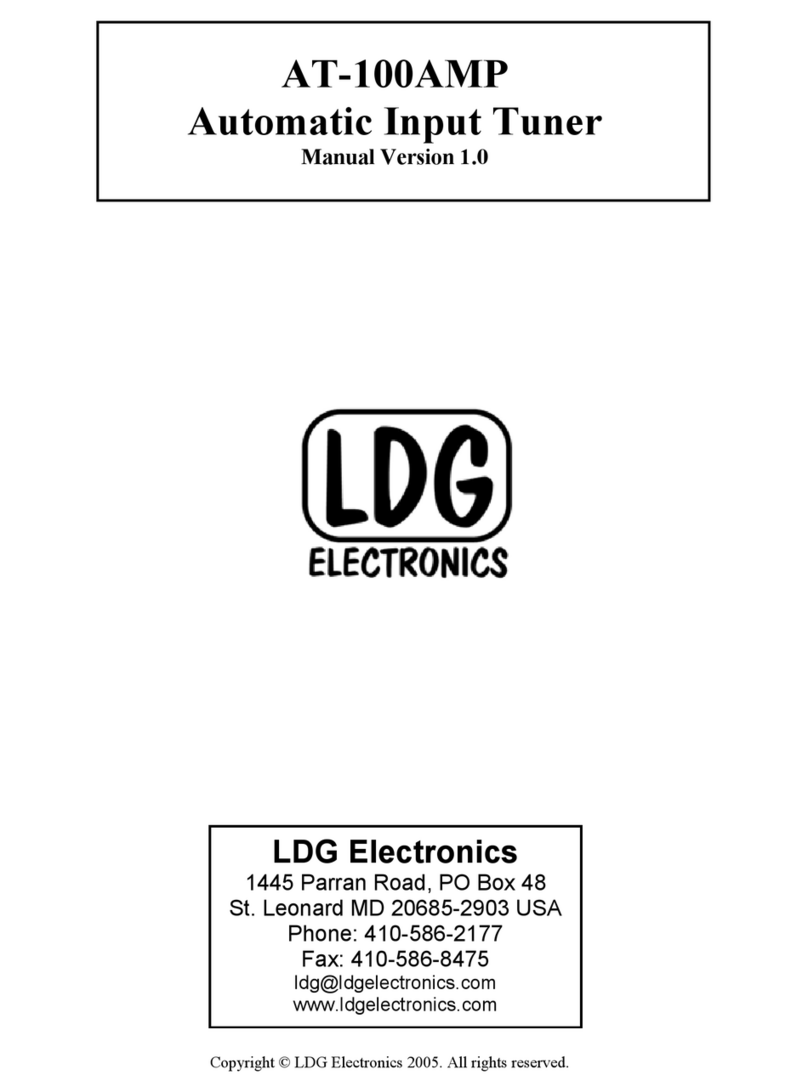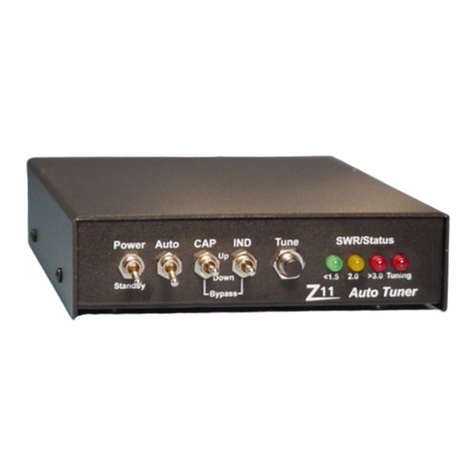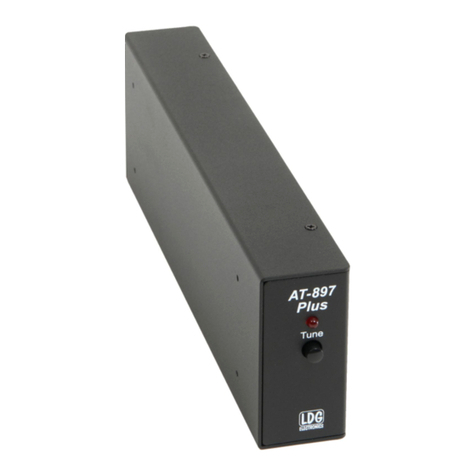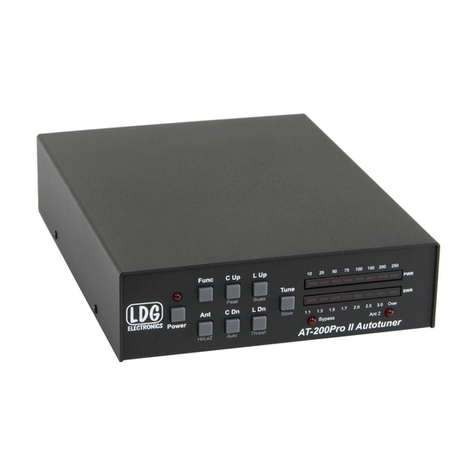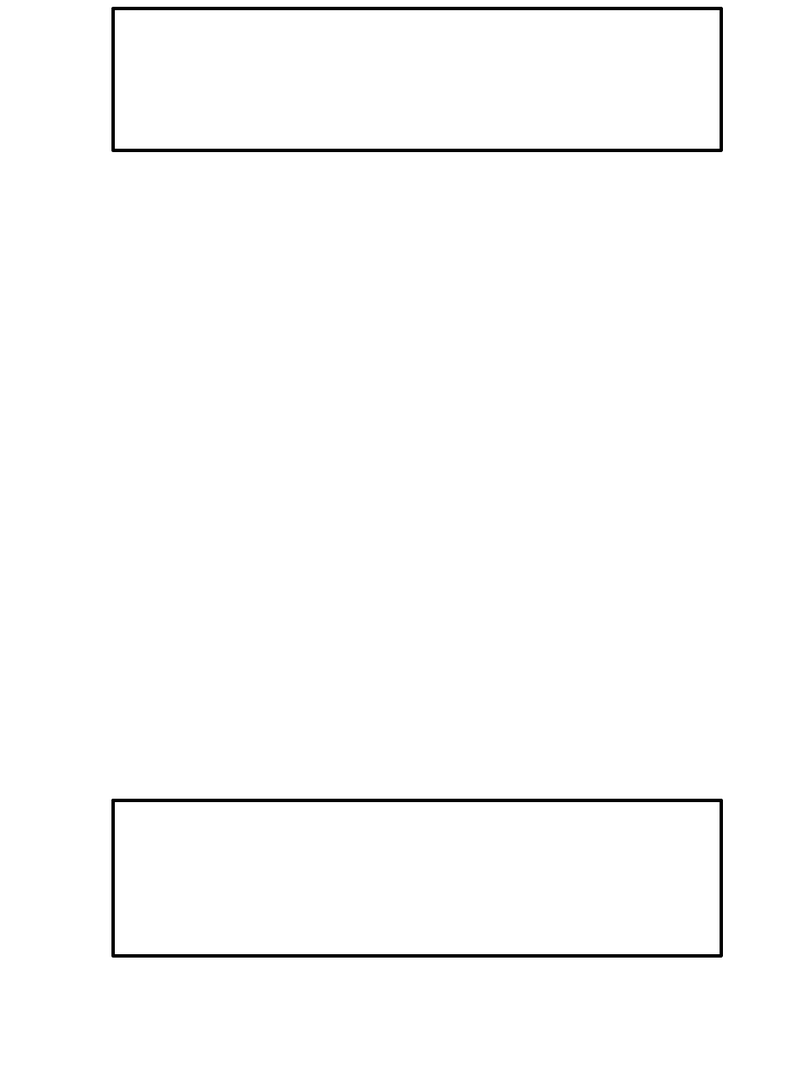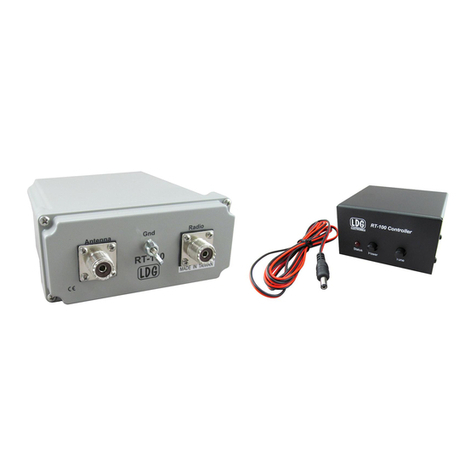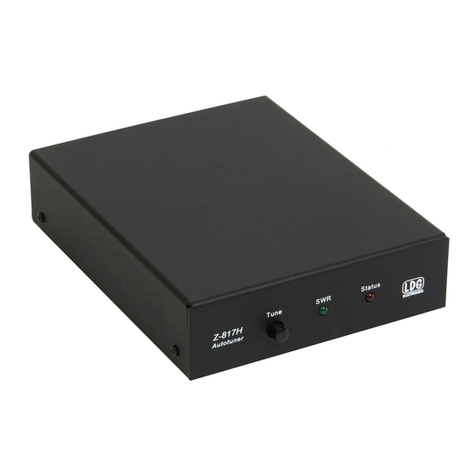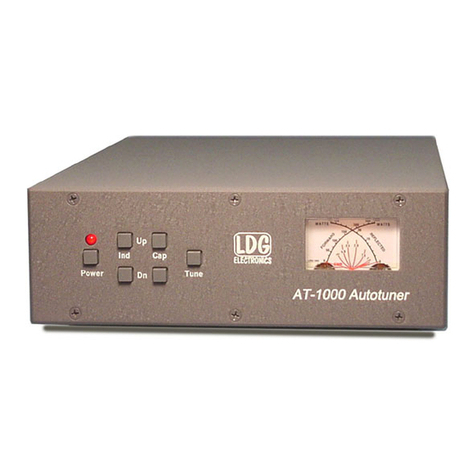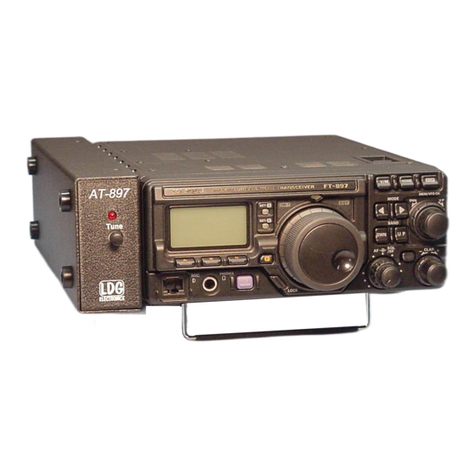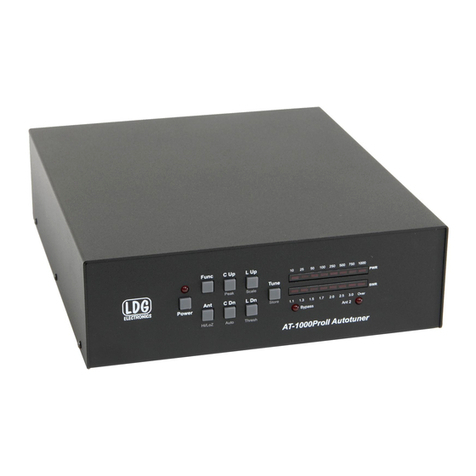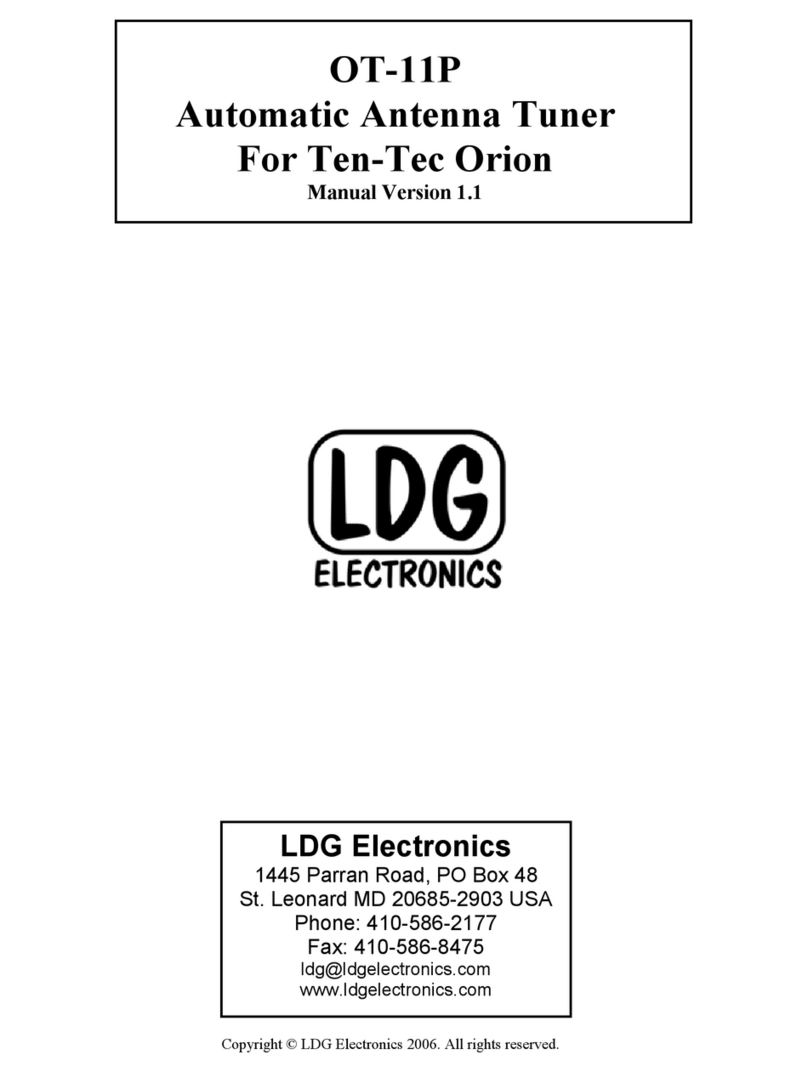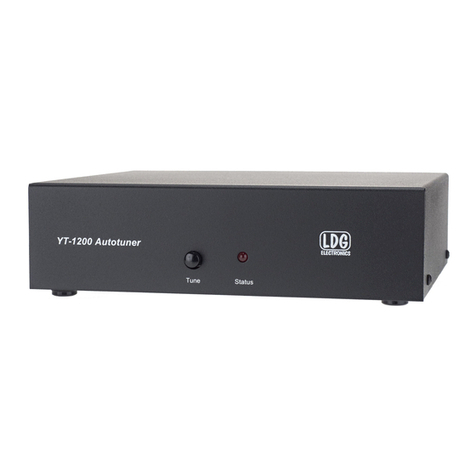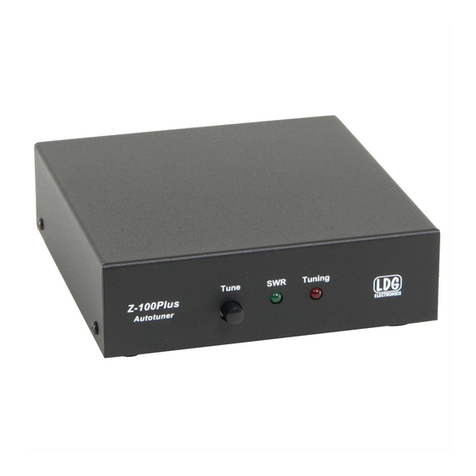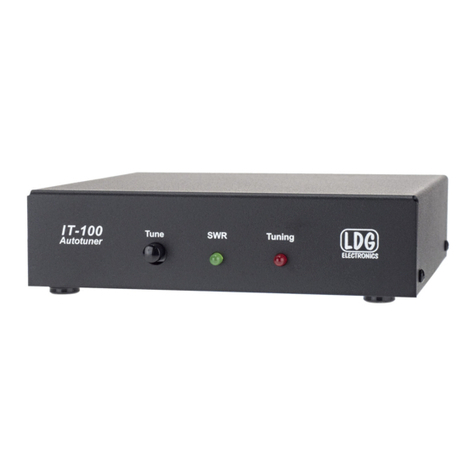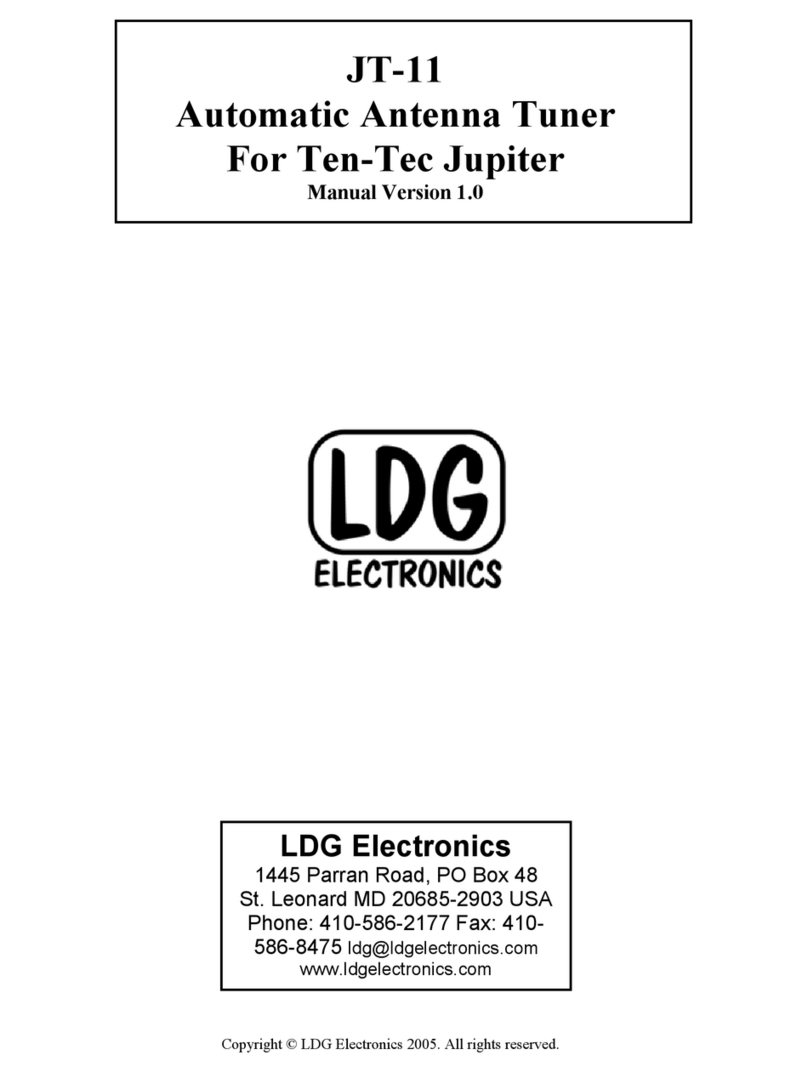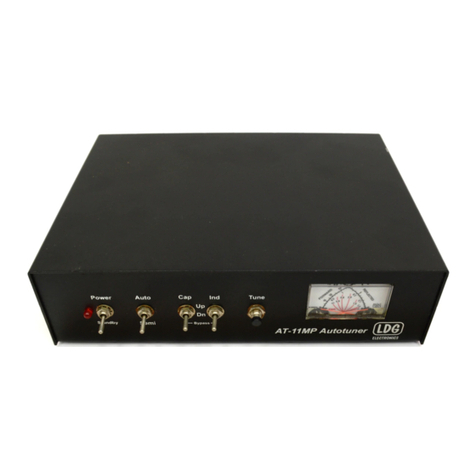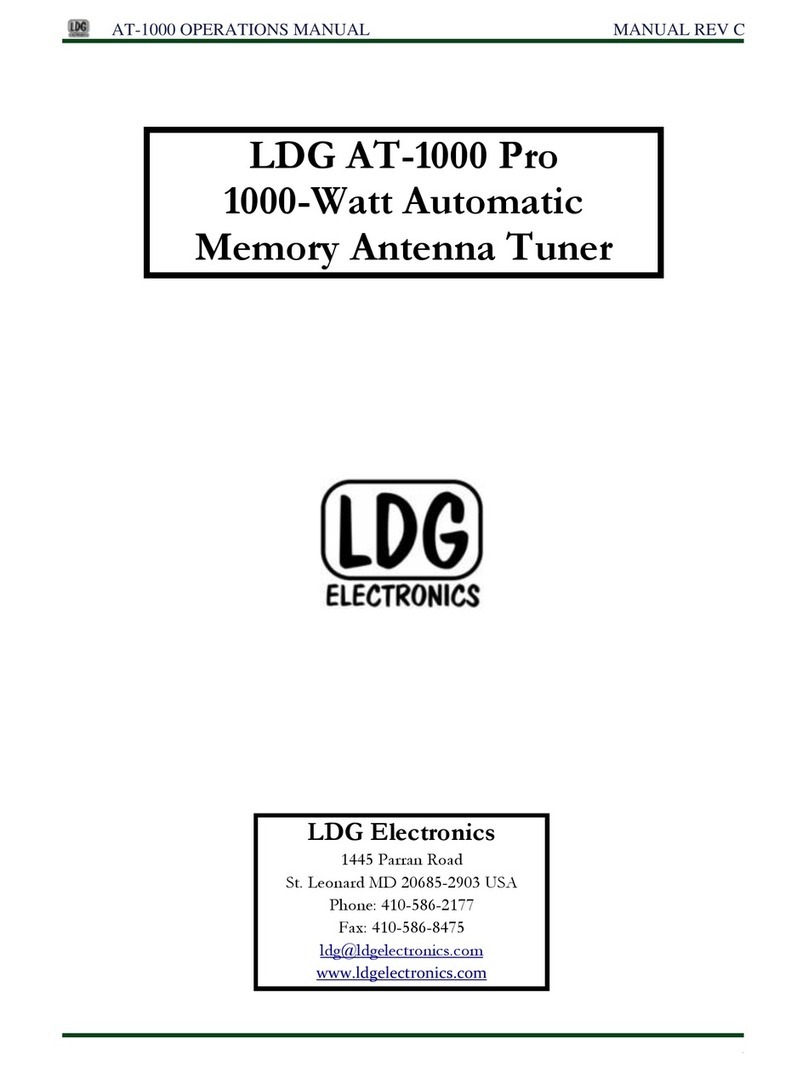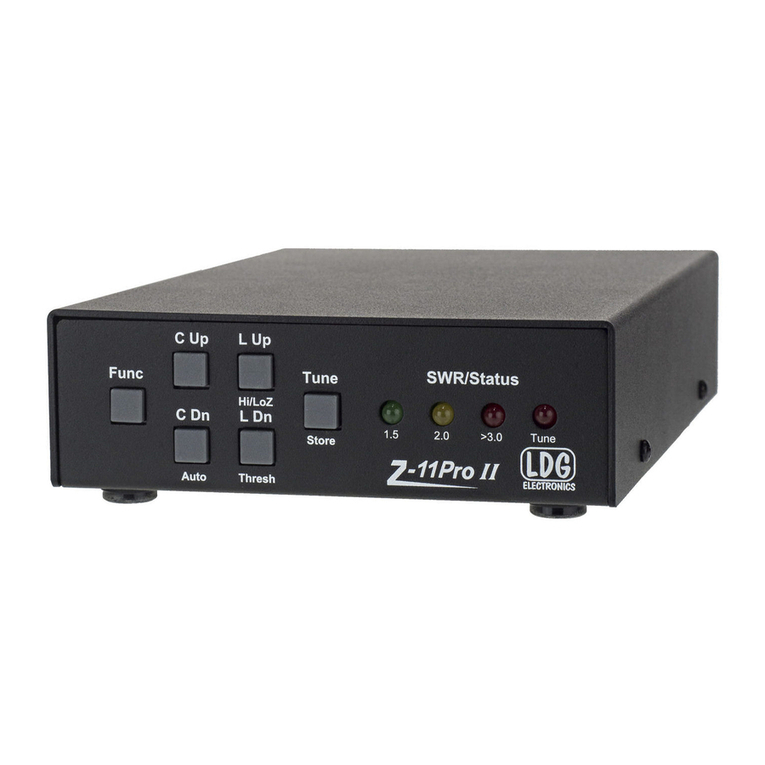
PAGE 7
INSTALLATION
The Z-11ProII tuner is designed for indoor operation only; it is not water resistant. If you use
it outdoors (Field Day, for example), you must protect it from the rain. The Z-11ProII is
designed for use with coax-fed antennas. If use with longwires or ladder-line-fed antennas is
desired, an external balun is required. The LDG RBA-4:1 or RBA-1:1 is ideal, depending on the
antenna and transmission line used.
Place the Z-11ProII in a convenient location near the transceiver. Always turn your radio off
before plugging or unplugging anything. The radio may be damaged if cables are connected or
disconnected while the power is on.
Connect the HF antenna jack on the transceiver to the TX jack on the back of the Z-11ProII,
using a 50 ohm coax cable rated 125 watts or higher.
Connect a 50-ohm antenna feedline coax to the ANT jack on the back of the Z-11ProII.
The Z-11ProII is designed to interface directly with many popular ICOM and Yaesu
transceivers, enabling one button tuning. In the case of ICOM radios, the optional interface cable
also powers the tuner.
For ICOM radios supporting the AH-3 or AH-4 external tuner, connect the 4-pin Molex
connector of the optional ICOM interface cable to the radio’s Tuner port. Then connect the 1/8”
stereo plug on the other end of the ICOM interface cable to the jack marked Radio on the rear of
the Z-11ProII. Connect the coaxial DC power plug of the ICOM interface cable to the 12 VDC
Power jack.
For Yaesu FT-857 and FT-897, use the optional Y-ACC cable and plug the red end marked
Radio into the transceiver’s ACC port. Plug the black end of the Y-ACC cable into the jack
marked Radio on the rear of the Z-11ProII.
Unless the Z-11ProII is being powered by the ICOM radio interface cable as above, you’ll
also need to plug in the supplied DC coaxial power cable2. This cable has a 2.5x5.5mm coaxial
plug on the end. Plug the coaxial plug into the 12 VDC Power jack on the rear of the Z-11ProII,
and connect the other end to a DC power source between 11 and 16 volts DC, capable of
supplying up to 300 mA. The red wire is positive.
Grounding the Z-11ProII tuner will enhance its performance and safety. LDG recommends
that you connect your tuner to a suitable ground. A common ground rod connected to buried
radials is ideal, but a single ground rod, a cold water pipe, or the screw that holds the cover on an
AC outlet can provide a serviceable ground. LDG strongly recommends the use of a properly
installed, high quality lightning arrestor on all antenna cables.
2Or, the Z-11ProIImay be powered by optional internal batteries. See the section on Battery Installation for more
details.






